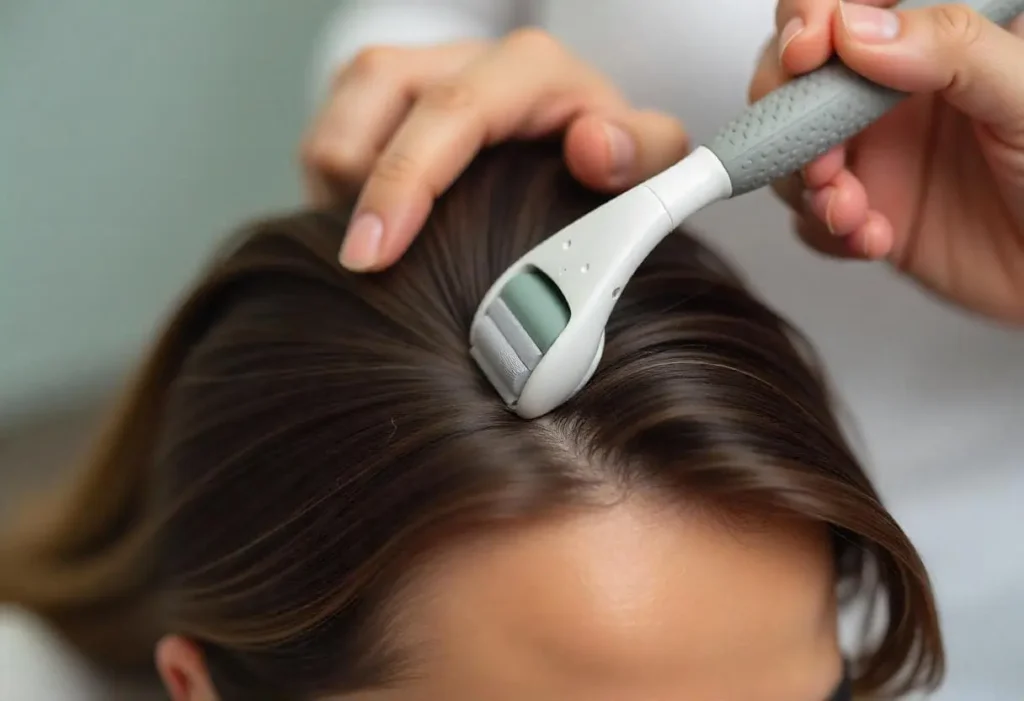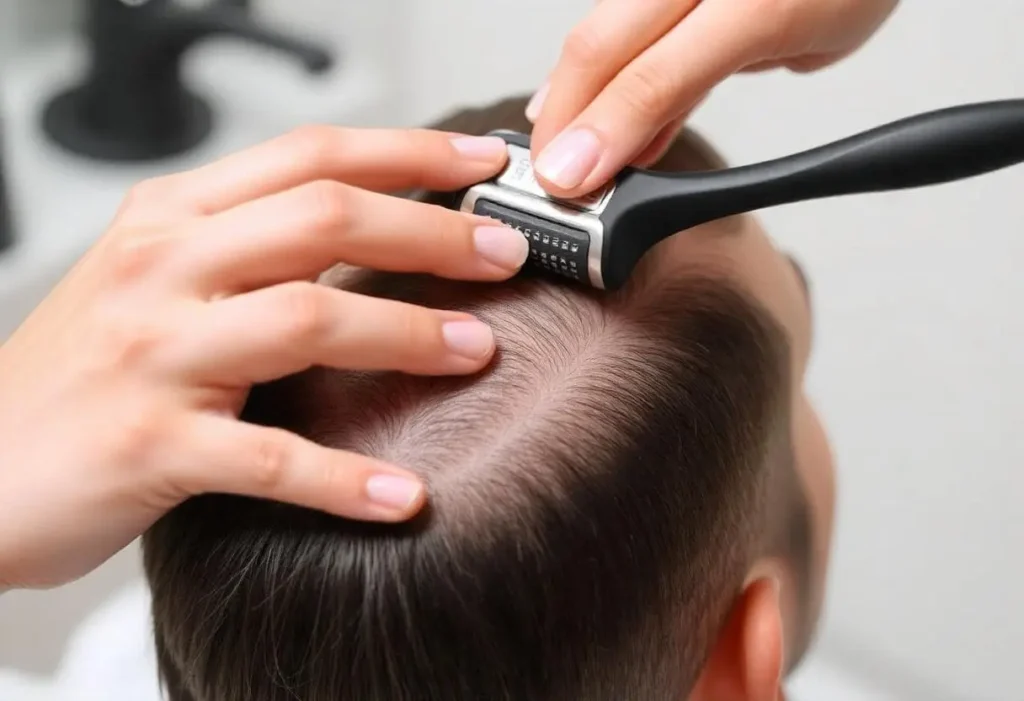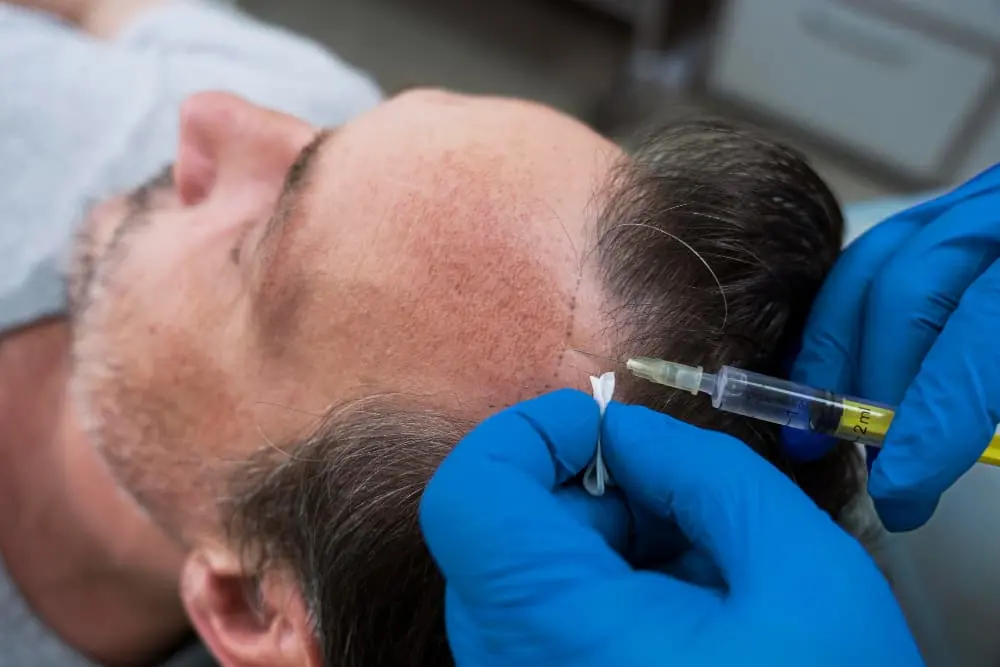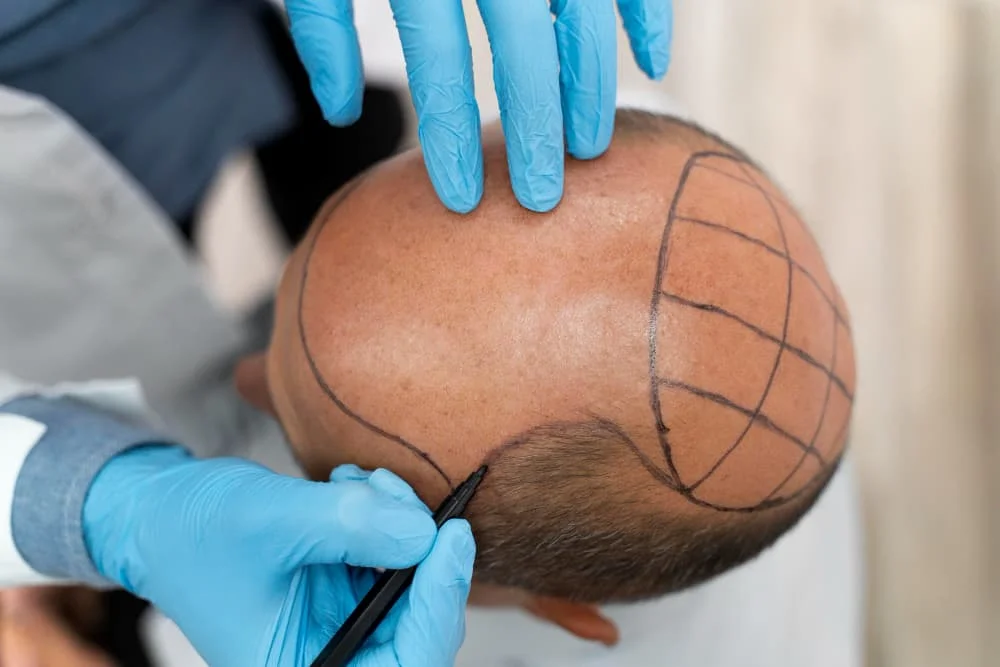
Hair loss can be a disheartening experience, prompting many to explore various remedies in the hopes of stimulating regrowth. The derma roller, a small handheld device equipped with tiny needles, has emerged as a popular tool for this purpose. But does it really live up to the hype? Let’s dive into the world of derma rollers and see if they can truly unlock the secret to thicker, healthier hair.
Understanding Derma Rollers and Their Role in Hair Growth
In the quest for thicker, healthier hair, individuals facing hair loss often turn to various tools and treatments. Among them, the derma roller has emerged as a popular option, promising to stimulate hair growth and combat thinning. Let’s unravel the mystery surrounding derma rollers and understand how they might play a role in promoting hair regrowth.
What is a Derma Roller?
A derma roller is a small, handheld device equipped with a roller covered in tiny needles. These needles, typically made of titanium or stainless steel, create micro-punctures on the skin’s surface when rolled over it. While initially popular in skincare for addressing concerns like wrinkles and scars, derma rollers have also gained traction as a potential aid in hair loss treatment.
How Does Microneedling Stimulate Hair Growth?
The concept behind using a derma roller for hair growth lies in its ability to trigger the body’s natural healing response. The micro-injuries created by the needles prompt the scalp to release growth factors and increase blood flow to the hair follicles. This enhanced circulation delivers essential nutrients and oxygen to the follicles, potentially revitalizing dormant ones and encouraging new hair growth.
The Science Behind Derma Rollers for Hair Loss
While the idea of microneedling stimulating hair growth seems promising, scientific evidence on its effectiveness is still evolving. However, several studies have shown encouraging results. Some research suggests that derma rolling, when combined with topical hair loss treatments, may enhance their absorption and effectiveness. Additionally, microneedling has been observed to trigger the production of collagen and other growth factors in the scalp, which could contribute to healthier hair follicles and improved hair growth.
Although more research is needed to fully understand the long-term effects and optimal use of derma rollers for hair loss, the existing evidence suggests that they may offer a potential solution for those seeking to combat hair thinning and promote regrowth.
Benefits of Using a Derma Roller for Hair Growth

While the jury’s still out on its absolute efficacy, there are compelling reasons why people are turning to derma rollers to combat hair loss. Let’s take a look at some of the potential benefits this simple tool might offer:
Enhanced Blood Circulation to the Scalp
Think of your scalp as a garden. Just like plants need water and nutrients to flourish, your hair follicles need a good blood supply to thrive. Derma rolling, by creating those tiny micro-punctures, essentially gives your scalp a wake-up call. This gentle “injury” triggers a healing response, leading to increased blood flow to the area. This rush of blood brings with it a fresh supply of nutrients and oxygen, revitalizing the follicles and potentially coaxing dormant ones back into action.
Increased Absorption of Hair Growth Products
Ever feel like your hair products just sit on the surface of your scalp? Derma rolling may help change that. The micro-channels created by the needles act like tiny pathways, allowing topical hair growth treatments to penetrate deeper into the scalp. This improved absorption could mean your products work harder and more effectively, potentially boosting their hair growth potential.
Stimulating Collagen Production for Healthier Hair Follicles
Collagen is the building block of healthy skin and hair. It provides structure and support to your hair follicles, ensuring they’re strong and resilient. Microneedling, the process behind derma rolling, has been shown to stimulate collagen production in the skin. When applied to the scalp, this could translate to healthier hair follicles, which in turn may lead to improved hair growth and reduced hair loss.
While these potential benefits make derma rollers an intriguing option for those battling hair loss, remember that individual results can vary. It’s always wise to consult with a doctor before incorporating any new tool into your hair care routine.
How to Use a Derma Roller on Hair Effectively

Using a derma roller on your scalp might seem simple, but doing it correctly is crucial for achieving the best results and avoiding any unwanted side effects. Let’s break down the process into easy-to-follow steps.
Choosing the Right Needle Size for Your Scalp
Not all derma rollers are created equal. The needle size plays a significant role in determining the effectiveness and safety of the treatment.
- 0.25mm to 0.5mm: These shorter needles are generally considered safe for at-home use and are suitable for beginners or those with sensitive scalps. They create micro-channels that can help improve product absorption and stimulate blood flow.
- 0.75mm to 1.0mm: These needles penetrate deeper into the scalp and may offer more pronounced results in stimulating collagen production and hair growth. However, they require more caution and should ideally be used under the guidance of a professional.
- 1.5mm and above: These longer needles are typically reserved for professional use and are not recommended for at-home treatments.
It’s best to start with a shorter needle size and gradually increase it as your scalp tolerates it. If you’re unsure about which needle size is right for you, consult a doctor for personalized advice.
Step-by-Step Guide to Using a Derma Roller
- Cleanse and Disinfect: Start by washing your hair and scalp thoroughly with a gentle shampoo. Disinfect your derma roller with rubbing alcohol before and after each use to prevent infection.
- Section Your Hair: Divide your hair into sections to ensure you can easily access your scalp.
- Roll Gently: Apply gentle pressure and roll the derma roller back and forth over your scalp in different directions – horizontally, vertically, and diagonally. Avoid rolling over the same area too many times to prevent irritation.
- Apply Hair Growth Products (Optional): If desired, you can apply a topical hair growth serum or oil after derma rolling to enhance absorption.
- Cleanse and Moisturize: After the treatment, gently cleanse your scalp and apply a soothing moisturizer to calm any redness or irritation.
Recommended Frequency and Routine
The frequency of derma rolling depends on the needle size you’re using.
- For shorter needles (0.25mm to 0.5mm): You can use the derma roller 2-3 times a week.
- For longer needles (0.75mm to 1.0mm): It’s recommended to use it once a week or every other week to allow your scalp ample time to heal between sessions.
Consistency is key when it comes to derma rolling. Stick to a regular routine and be patient, as it may take several weeks or even months to see noticeable results.
Remember, derma rolling should never be painful or cause bleeding. If you experience any discomfort or excessive redness, stop the treatment and consult a doctor.
Potential Side Effects and Precautions
While derma roller is generally considered safe when used correctly, it’s important to be aware of potential side effects and take necessary precautions to ensure a safe and effective experience.
Common Side Effects to Watch Out For
Some mild side effects are normal after derma rolling and usually subside within a few days. These may include:
- Redness: Your scalp might appear slightly red or flushed after the treatment, similar to a mild sunburn. This is a natural reaction to the micro-injuries and should disappear within a short period.
- Slight Swelling or Tenderness: Some minor swelling or puffiness may occur, and your scalp might feel a bit tender to the touch for a few days. These are temporary reactions as your skin heals.
- Sensitivity: You might experience slight sensitivity or tingling on your scalp after using a derma roller. This sensation usually fades quickly.
Who Should Avoid Using a Derma Roller?
While generally safe, derma rolling may not be suitable for everyone. Individuals with the following conditions should avoid using a derma roller:
- Active Skin Infections or Conditions: If you have any active skin infections, open wounds, or skin conditions like eczema or psoriasis on your scalp, derma rolling can worsen these conditions and lead to further complications. It’s best to wait until these conditions are fully healed before using a derma roller.
- Bleeding Disorders or Blood-Thinning Medications: If you have a bleeding disorder or are taking blood-thinning medications, derma rolling may increase the risk of bleeding. Consult your doctor before using a derma roller in such cases.
- Pregnancy: It’s best to avoid derma rolling during pregnancy as its safety during this period hasn’t been fully established.
Tips for Safe and Hygienic Use
To minimize the risk of side effects and ensure a safe experience, it’s crucial to follow these tips:
- Cleanse and Disinfect: Always thoroughly clean and disinfect your derma roller before and after each use to prevent infection. This is particularly important as you’re creating micro-punctures on your scalp.
- Use Gentle Pressure: Apply gentle pressure while rolling to avoid causing excessive irritation or injury to the scalp. Remember, the goal is to create micro-channels, not deep wounds.
- Start with a Shorter Needle Length: If you’re new to derma rolling, start with a shorter needle length (0.25mm to 0.5mm) and gradually increase it as your scalp tolerates it. This will help minimize any discomfort or irritation.
- Avoid Sharing Your Derma Roller: Sharing your derma roller can increase the risk of infection. It’s strictly for personal use only.
- Consult a Doctor: If you have any concerns or experience any severe side effects, consult a doctor immediately.
Remember, safety and hygiene are paramount when using a derma roller. By following these precautions and using the device responsibly, you can minimize risks and potentially reap the benefits of this hair growth treatment.
Comparing Derma Rollers to Other Hair Growth Treatments

Derma rollers have carved their niche in the hair growth market, but it’s natural to wonder how they compare to other popular treatments. Let’s explore how derma rollers stack up against topical solutions and PRP therapy, and consider the potential of combining them for amplified results.
Derma Rollers vs. Topical Treatments
Topical treatments are a common go-to for combating hair loss. While they can be effective on their own, some believe that pairing them with derma rolling could boost their performance. The idea is that the tiny punctures created by the derma roller allow the topical solution to penetrate deeper into the scalp, potentially reaching the hair follicles more directly.
PRP therapy, or Platelet-Rich Plasma therapy, is another popular treatment for hair loss. It involves injecting concentrated platelets from your own blood into the scalp to stimulate hair growth. While PRP is generally seen as a more intensive treatment than derma rolling, some practitioners suggest that combining the two may offer a synergistic effect. The micro-channels created by the derma roller could potentially enhance the delivery of the growth factors found in PRP to the hair follicles.
Ultimately, the best approach to hair loss treatment will vary depending on your individual needs and the underlying cause of your hair loss. It’s essential to consult with a qualified doctor to determine the most suitable treatment plan for you. They can assess your situation and recommend the best combination of therapies to help you achieve your hair growth goals.
Real Results: What to Expect from Derma Rolling for Hair Growth
The allure of derma rolling lies in its potential to stimulate hair growth and improve scalp health. But it’s important to set realistic expectations and understand the timeframe for visible results.
Timeframe for Visible Improvements
Patience is key when it comes to derma rolling for hair growth. It’s not a quick fix, and you shouldn’t expect overnight miracles. Generally, it may take several weeks or even months of consistent use to see noticeable changes in hair thickness and density.
- Initial Improvements: Within the first few weeks, you might notice a reduction in hair shedding and a healthier-looking scalp.
- New Hair Growth: After a few months of regular use, you may start to see new hair growth, particularly in areas where hair was thinning.
- Continued Improvement: Consistent use over time can lead to further improvement in hair thickness and density.
Remember, individual results can vary depending on various factors, including the severity of hair loss, underlying causes, and individual response to the treatment.
When to Consult a Professional
While derma rolling can be done at home, it’s important to consult with a doctor if you have any underlying health conditions or concerns about your hair loss. A doctor can help diagnose the cause of your hair loss and recommend the most appropriate treatment options, which may include a combination of derma rolling with other therapies.
If you’re unsure about the proper technique or needle size for your needs, a doctor can provide guidance and ensure you’re using the derma roller safely and effectively. They can also monitor your progress and adjust your treatment plan as needed.
Recent Posts
-
 Does Creatine Cause Hair Loss? Separating Fact from Fiction21 Jan 2025
Does Creatine Cause Hair Loss? Separating Fact from Fiction21 Jan 2025 -
 How Long Does Hair Transplant Last? A Comprehensive Guide to Long-Term Results15 Jan 2025
How Long Does Hair Transplant Last? A Comprehensive Guide to Long-Term Results15 Jan 2025 -
 Hair Loss After Hair Transplantation: Is It Normal and What to Do?13 Jan 2025
Hair Loss After Hair Transplantation: Is It Normal and What to Do?13 Jan 2025 -
 Donor Area in Hair Transplant: All You Need to Know - Istanbul Hair Institute06 Jan 2025
Donor Area in Hair Transplant: All You Need to Know - Istanbul Hair Institute06 Jan 2025 -
 The Connection Between Oral Health and Overall Health03 Jan 2025
The Connection Between Oral Health and Overall Health03 Jan 2025

